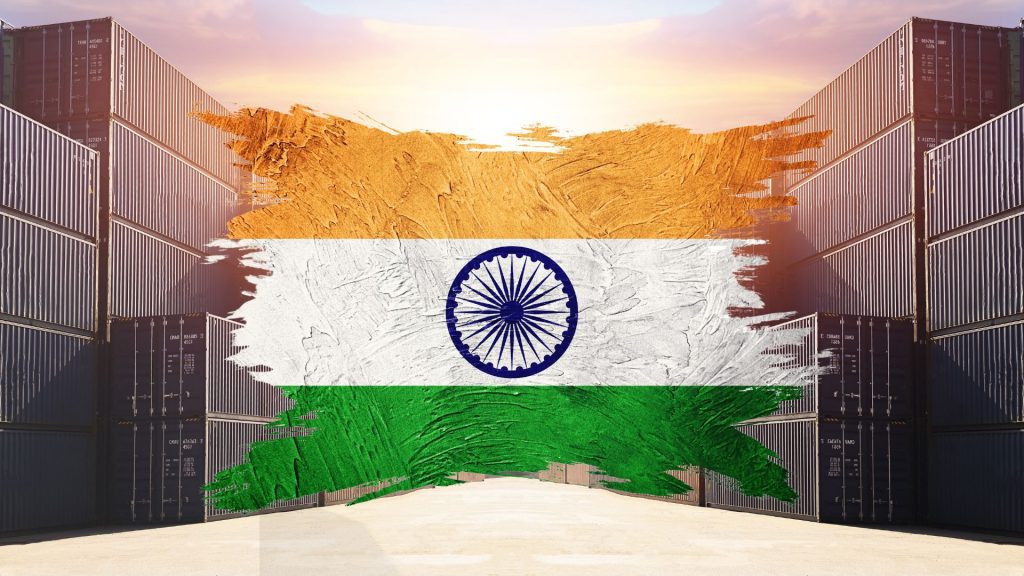India has emerged as a formidable force in the global export market, showcasing robust growth across various sectors. Spearheaded by key industries such as information technology, textiles, pharmaceuticals, and agriculture, the country has cemented its position as a significant player in the international trade arena. This analysis delves into the intricacies of India’s export landscape, shedding light on the trends defining its trade relations with major partners such as the United States, the UAE, and China. Amidst the promising opportunities that abound, the nation grapples with a spectrum of challenges, ranging from intricate trade policies to logistical intricacies and evolving market dynamics. Furthermore, a critical examination of the contribution of Indian exports to the nation’s GDP reveals the profound impact of this sector on India’s overall economic growth trajectory. Explore the diverse world of Indian exports, from software and textiles to agriculture and pharmaceuticals, and understand how they influence the global economy.
In fiscal year 2023, India’s top export sectors were diverse, with engineering goods leading the way, valued at over 8.5 billion Indian rupees. These goods included products made from iron and steel, non-ferrous metals, industrial machinery, and automobiles, among others. Additionally, ready-made garments, cotton yarn, fabrics, made-ups, and handloom fabrics were prominent contributors, valued at 1,299 and 877 billion Indian rupees, respectively. The pharmaceutical industry also played a substantial role, with organic and inorganic chemicals and drugs and pharmaceuticals valued at 2,435 and 2,040 billion Indian rupees, respectively. Furthermore, agricultural exports like rice and marine products held their ground, valued at 896 and 649 billion Indian rupees, respectively.
These figures showcase the diversity of India’s export portfolio, with strengths in both traditional sectors like textiles and rapidly growing industries like pharmaceuticals. The engineering goods sector stands out as a major contributor, reflecting India’s expertise in manufacturing and engineering. These sectors collectively contribute significantly to India’s economic growth and its position as a key player in the global export market.
India’s export destinations in 2023 were led by the United States, which received approximately $71.2 billion worth of Indian goods. The United Arab Emirates (UAE) followed closely at $25.4 billion, serving as a significant hub for re-exports and importing a diverse range of Indian products. China, with $23.1 billion in imports from India, has become an increasingly important trade partner, dealing in a wide array of goods, including raw materials, consumer products, and IT services. Bangladesh and Hong Kong also featured prominently in India’s export landscape, with $14.1 billion and $11.2 billion in Indian imports, respectively.
These trends underscore the critical importance of these trading partners in India’s global export strategy. The United States and the UAE have specific niches, such as IT and re-exporting, while China’s broad spectrum of imports indicates its growing role in India’s trade dynamics. Bangladesh and Hong Kong further contribute to India’s diverse export portfolio, cementing its position as a formidable player in the global trade arena.
In 2022, India’s exports of goods and services accounted for 22.45% of its GDP, highlighting the substantial role of exports in the country’s economic activity. In 2021, India ranked as the 6th largest economy globally in terms of GDP, underscoring its economic prowess. Additionally, it was the 14th largest exporter and 11th largest importer in the world. However, in terms of GDP per capita, India ranked 137th, indicating disparities in income distribution.
Moreover, India’s economy ranked 41st in complexity according to the Economic Complexity Index (ECI), suggesting a diverse economic landscape with a mix of industries and trade capabilities. These statistics emphasize the vital contribution of exports to India’s GDP, its position as a major global player in trade, and the potential for further economic growth and development.
In 2023, the Indian exports industry faces a multitude of challenges that impact its competitiveness and efficiency. Among these challenges are infrastructural constraints, with inadequate facilities in ports, airports, and logistics leading to delays and additional costs. Exporters grapple with a complex regulatory environment, navigating various laws and compliance requirements, including customs and foreign trade policies. Fierce competition from countries with lower labor and production costs adds further pressure on Indian exporters. Additionally, fluctuating currency exchange rates make it challenging to predict profits and devise long-term strategies. A shortage of skilled professionals in fields like export-import management and logistics hampers the industry’s growth potential.
To address these challenges, there are opportunities that can be harnessed. The growth of e-commerce platforms presents a new avenue for Indian exports, particularly in sectors like IT and textiles. Improving product quality and adhering to international standards can enhance competitiveness in the global market. Moreover, economic reforms such as “Make in India” and the implementation of the Goods and Services Tax (GST) aim to simplify business processes and stimulate export growth.
This examination of challenges and opportunities highlights the need for strategic measures and investments to bolster India’s export industry, ensuring its continued success in the global trade landscape.
Unlock a world of Indian resources by joining Hi-Fella, an online platform where suppliers and buyers meet internationally. Start exploring Hi-Fella website, downloading Hi-Fella app on Play Store or App Store, and signing up for an account for an immersive journey into the rich tapestry of India’s vibrant culture, history, and diverse resources. Join us now!








